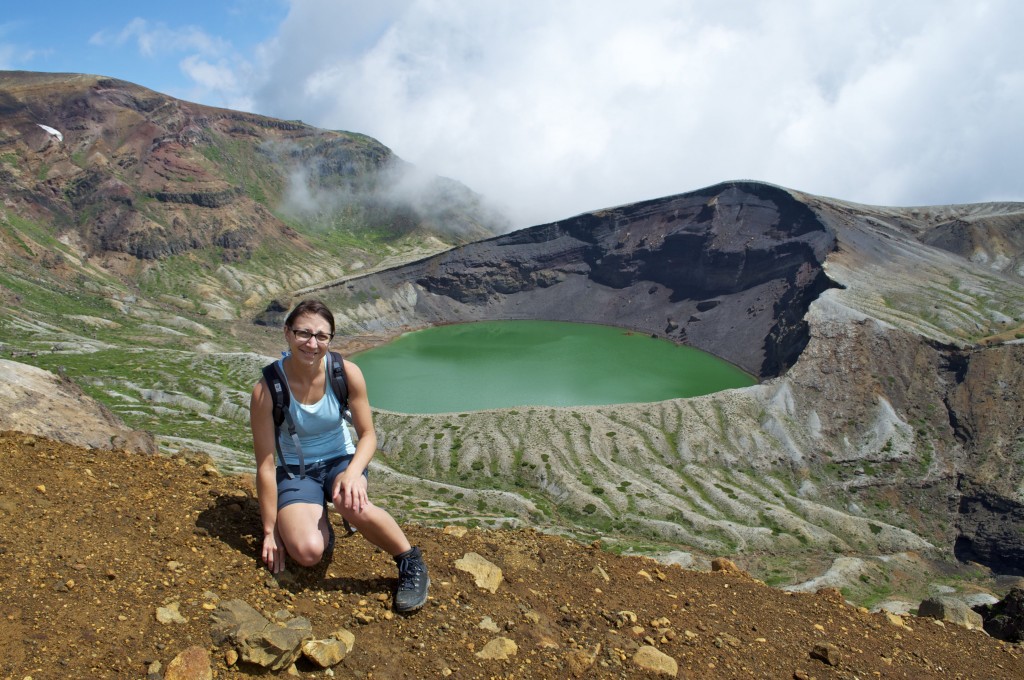It has been a while since our last 10 Minute Interview, we thought it was time to post another.
They are proving to be some our most successful posts. Sourcing people to take part hasn’t been too difficult (yet!) but if you think you might like to contribute, Dan & I are always looking for people to speak to, so don’t hesitate to get in touch if you think you might want to help us!
So, this weeks interviewee is Sandra Karl, for Leeds University. I met Sandra a few years ago, at the BGA conference (see my post about the conference). At this year’s conference we had a lot of talk about, as we are at very similar stages in our PhD (the very scary final year) and have both been thinking about career options etc… If you remember from my post about BGA, Sandra gave one of my favourite talks and her research interestingly combines volcanology and seismology.
Vital Statistics
- You are: Sandra Karl
- You work at: School of Earth and Environment, University of Leeds
- Your role is: final year PhD student
Q1) What are you currently working on?
My PhD investigates one specific type of volcano seismic signals, called long period seismicity. After doing a lot of work with numerically modelled data I have most recently started to look at real seismograms, in the nature of a case study based on Soufriere Hills Volcano in Montserrat, West Indies. I try to analyse the waveform shapes and amplitudes as well as apply moment tensor inversion and location techniques to the data to gain information on the depth and location the earthquakes were generated, as well as the physical mechanisms within the volcanic edifice that yield the seismic signals under investigation.
Q2) What is a typical day like for you?
After checking my emails and dealing with urgent matters right away I usually set up a to-do list for the day (yes, I am German and can’t get through a day without a list!). The rest of the day I then usually spend on active research and some thesis writing. During term time student contact hours loosen up my day a bit which is great! I get to do demonstrating on various geophysics modules such as Time Series Analysis and Fundamentals of Geophysics.
And of course, because my job title is after all still PhD STUDENT more than one day a week ends with a brief visit to the pub with some of my PhD fellows!
Q3) Could you provide a brief insight into the main findings of your recent paper/research?
I am currently writing a paper about the main findings of my PhD. We aim to show that the commonly used point source assumption for seismic sources in tectonic settings cannot always be adapted into volcanic settings. In particular, the physical process underlying volcanic LP events is the rupture of a spatially extended source, the magma column in the conduit.
Q4) What has been the highlight of your career so far?
While at the IAVCEI 2013 conference in Japan earlier this year I, for the first time in my life, saw a pyroclastic current and volcanic lightning in the eruption cloud of the erupting Sakurajima volcano in Kagoshima.
Events like this really remind me why I chose to become a Volcanologist!
Q5) To what locations has your research taken you and why?
Since starting my PhD I have been travelling a lot, for many different reasons. Oral or poster presentations at international conferences have taken me to: San Francisco (USA), Vienna (Austria), Colima (Mexico), Kagoshima (Japan), Bristol (GB), Oxford (GB), Cambridge (GB), and Durham (GB). As a demonstrator on student field courses I have visited Lanzarote and Pembroke (Wales). And to undertake field work for my or a colleagues projects I also went to Turkey and Montserrat.
Q6) Do you have one piece of advice for anyone wanting to have a career similar to yours?
Before accepting a position make sure that you are entirely certain what the project you will work on includes! In order to be successful in a PhD and stay motivated and enthusiastic you have to love what you are doing, and commit to it on a daily basis. Over the years I have met many PhD students who started a PhD because they ‘were offered’ one, and found themselves looking out for other options after a very short time.
Q7) If you could invent an element, what would it be called and what would it do?
Snadrium – The Snadrium would start to glow one day before a volcano is about to erupt! This would make eruption forecasting much easier, and could save many lives!
Sandra completed her undergraduate degree and M.Sc at the LMU in Munich, Germany. While a student there, she visited Colima in Mexico as a volunteer working at the Volcan de Colima, which made her decision do pursue a PhD in Volcanology very easy! Sandra then came to the UK as a PhD candidate in 2010. Volcanoes are not only her job but also her passion, and her goal is it to climb a volcano on every continent of the Earth one day.
Outside Volcanology, she does a lot of running and other sports to stay sane!

